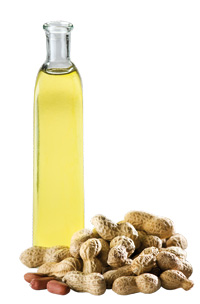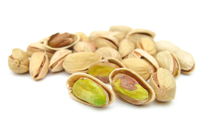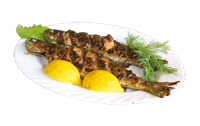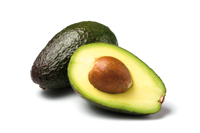We need to include fats in our diet to lubricate our joints, cushion our organs from bumpy road rides, store cancer-preventing vitamins like A, D, E and K and have some spare energy on tough and tiring days.
Let’s take a look at which fats we can give a miss, which ones we must have, and how much fat we should consumer on a daily basis. Let us also understand what could happen to us if we do not have any fat or oils at all.
Fatty acids are of two types: saturated or unsaturated. If unsaturated, then fatty acids can be either mono unsaturated fatty acids or poly unsaturated fatty acids.
Saturation details
Saturated means “filled to capacity”. In case of oils, it means “filled to capacity with hydrogen atoms”. Fatty acids are always made up of carbon and hydrogen atoms. In fact, all fatty acids are made of different combinations of carbon molecules and hydrogen atoms. The saturated variety has a hydrogen atom for every carbon atom. This makes this fat dense and solid at room temperature.
Stands to reason that unsaturated means not filled to capacity with hydrogen atoms. So mono unsaturated fats have only one [mono] point of unsaturation and poly unsaturated means many [poly] points of unsaturation. Unsaturated fats are liquid, less dense and are therefore termed as oils.
Every triglyceride has different types of fatty acids. MUFA have mainly Mono Unsaturated Fatty Acid chains. They might have some Poly Unsaturated Fatty Acid [PUFA] or saturated fatty acids [SFA] also. Like wise, PUFA oils have primarily Poly Unsaturated Fatty Acid chains. Saturated fats have primarily saturated fatty acid chains.
Oils as you know are primarily used for cooking to add taste or bring out the flavour of food. But even if you are the type, who is now seriously thinking of cutting down on your oil intake and keeping it within the healthy zone of ½ a litre per person per month, which oil must you use?
As with everything nutritional, this subject too is controversial and opinions divided. I am going to help you decide for yourself the best cooking oil to use. Let us first look at the requirements for cooking oil.
 Oily facts
Oily facts
Oils that are good for cooking require the following:
- High smoke point Oils that smoke at lower levels of heat or come to smoking point quickly cannot withstand the cooking processes. Imagine sauteing with oil that heats very quickly. Your saute will burn and the food will have an unpalatable odour. But more importantly, consuming food that is burned often or oil that is used to smoking point repeatedly, can be carcinogenic and destroy the very nutrients in the cooked food.
- Oxidation point Oils that do not oxidise easily when exposed to air, light and heat. This causes oils to get rancid and to spoil easily.
In other words, one needs an oil that is hardy, can withstand high temperatures and exposure. So, the management of the health of your cooking oil and its quality starts way before you use it for cooking.
How well can the various seeds like groundnut, til or rice bran withstand tedious extraction processes of heat light and exposure to oxygen?
 MUFA gains
MUFA gains
MUFA fats come up trumps here. Oils extracted from ground nuts and olives are hardy and can withstand the high temperatures of extraction, making them naturally fit for use in cooking. PUFA fats are delicate and wilt under the pressure of extraction. They can turn rancid, bitter and oxidised. Naturally then, the manufacturing process involves adding compounds and antioxidants synthetically to these oils to preserve their stability thereby making them super refined and less healthy. Refinement is a bad word with nutrition.
MUFA fat is hardy fat that can withstand high cooking temperature without spoiling easily or getting easily oxidised. Found in groundnut, and mainly in olive oil, til[sesame], mustard and to some extent in rice bran oil, these fats are best for everyday cooking. Pistachio, avocado, cashewnut, macademia nuts also have healthy MUFA fats.
 MUFA fats also help keep our arteries pliant and flexible. This gives us a better chance of lowering high blood cholesterol levels. Cholesterol plaque normally attaches to hardened and inflexible arteries. MUFA fats do one more important thing. They lower only the bad or what you have heard as the LDL cholesterol levels and do not touch the good cholesterol or the HDL levels. Some studies have shown that MUFA fats might even increase these levels. One could say, therefore, that MUFA fats protect the heart when used as part of a sensible diet. The verdict therefore is clear. Groundnut and olive or til [sesame] oil are the best for cooking. Refer to the table of contents of fatty acids, and memorise it so you never get confused again.
MUFA fats also help keep our arteries pliant and flexible. This gives us a better chance of lowering high blood cholesterol levels. Cholesterol plaque normally attaches to hardened and inflexible arteries. MUFA fats do one more important thing. They lower only the bad or what you have heard as the LDL cholesterol levels and do not touch the good cholesterol or the HDL levels. Some studies have shown that MUFA fats might even increase these levels. One could say, therefore, that MUFA fats protect the heart when used as part of a sensible diet. The verdict therefore is clear. Groundnut and olive or til [sesame] oil are the best for cooking. Refer to the table of contents of fatty acids, and memorise it so you never get confused again.
What about the SFA’s [saturated fatty acids] and PUFA—the SFA butter and ghee and the PUFA from sunflower, flax and pumpkin seeds? Don’t we need these? How should we get them? Can we cook with them?
To find answers to all these questions you need to first answer these questions:
- Do you need to have ample energy reserves?
- Would you always like to have velvety soft skin?
- Would you like to have dandruff-free hair?
- Would you like to stay calm and improve your concentration?
- Would you like to keep your blood pressure and waist girth under check?
If you have answered yes to all of these, it’s a yes to the use of SFAs and PUFA.
The energy reserve, or the energy you need to rely on, when you have tough and demanding work days comes from consuming SFAs—the butter and the ghee. But you can do with a maximum of a teaspoon of one of these a day, especially if you are a remote control or computer junkie. Without adequate exercise, your body begins to convert these or products that contain these like biscuits, cakes, and mithai to harmful cholesterol in the body. SFAs because of their density, have the highest smoking point and are in fact, the ideal medium for deep frying. The only condition is that you can have very small amounts—about 10 per cent of total calorie intake and seven per cent, if you are a heart patient.
The PUFA fats, also known as smart fats, [believe it or not] give you the velvety soft skin, the dandruff-free hair, because these are an important part of every cell of the body. PUFA fats improve mental stamina, calm and concentration, because 60 per cent of the fat found in our brain comes from PUFA. They even work in complex ways to keep your waist lines trim and blood pressure normal.
PUFA types
 Recall that there are two PUFA fats, W3 or omega-3 or Alpha linolenic acid found in flax, hemp seed, canola, soybean, walnut and dark green leaves; and W6 or omega-6 or linoleic acid found in safflower, sunflower, hemp, soybean, walnut, pumpkin, sesame and flax. In fact, so important are these oils that they are also called ‘Essential Fatty Acids’ [EFA]. These are essential because these are indispensable to effective and efficient metabolic function and just have to come from diet. Our body cannot synthesise them.
Recall that there are two PUFA fats, W3 or omega-3 or Alpha linolenic acid found in flax, hemp seed, canola, soybean, walnut and dark green leaves; and W6 or omega-6 or linoleic acid found in safflower, sunflower, hemp, soybean, walnut, pumpkin, sesame and flax. In fact, so important are these oils that they are also called ‘Essential Fatty Acids’ [EFA]. These are essential because these are indispensable to effective and efficient metabolic function and just have to come from diet. Our body cannot synthesise them.
Sunflower seeds, flax seeds, even walnuts are so delicate that they just cannot withstand extraction processes like MUFA oils do.So, using PUFA fats as cooking oil is out of question. Just to prove this point to yourself, keep walnuts or sunflower seeds out in the sunshine for a few days, you will cringe at their bitter taste because the exposure has spoiled their delicate oils.
Clearly, the only way to consume these essential oils is to get them from natural food sources. Include 2-3 servings [tablespoons] of the above nuts and seeds in your diet. Also include fish with teeth if you are non-vegetarian. These have the best omega-3 fats. Pomfret, mackerel, surmai and rawas are great brain foods and they lower depression and anxiety.
Daily dose
How do you know that you are getting adequate amounts of the healthy fats in your diet? Take a long hard look at these deficiency symptoms. Don’t worry, you can quickly correct them.
 Omega-6 fatty acid deficiency symptoms include:
Omega-6 fatty acid deficiency symptoms include:
- Eczema-like skin eruptions
- Loss of hair
- Liver degeneration
- Behavioural disturbances
- Kidney degeneration
- Excessive water loss through the skin accompanied by thirst
- Drying up of glands
- Susceptibility to infections
- Failure of wound healing
- Sterility in males
- Miscarriage in females
- Arthritis-like conditions
- Heart and circulatory problems
- Growth retardation.
Omega-3 fatty acid deficiency symptoms include:
- Growth retardation
- Weakness
- Impairment of vision and learning ability
- Motor incoordination
- Tingling sensations in arms and legs
- Behavioural changes.
All of the deficiency symptoms can be reversed by adding omega- 3 and -6 in your diet.
Other symptoms that can result for omega-3 deficiency, which respond very well to omega-3 supplements are high triglycerides, high blood pressure, sticky platelets, tissue inflammation, oedema, dry skin, mental deterioration, low metabolic rate and immune dysfunction.
While this article highlights the importance of healthy fats, remember that these are only one aspect of a healthy balanced and varied diet. A colourful diet with lots of vegetables and loads of multigrain are essential to assimilate all of these fats. Good luck with the healthy oils.
| OILS | SFA | MUFA | PUFA-W6 | PUFA-W3 |
|---|---|---|---|---|
| Olive | 14 | 78 | 7 | Trace |
| Canola | 6 | 61 | 22 | 11 |
| Mustard | 8 | 70 | 12 | 10 |
| Corn | 13 | 30 | 56 | – |
| Groundnut | 18 | 52 | 26 | – |
| Sesame | 15 | 42 | 42 | 1 |
| Sunflower | 7 | 34 | 58 | – |
| Ghee | 66 | 30 | 2 | 2 |
| Soybean | 15 | 27 | 53 | 0.5 |
| Safflower | 5 | 15 | 76 | -Trace |
| Rice Bran | 22 | 41 | 35 | – |
| Cotton | 22 | 25 | 52 | – |
 Spot an error in this article? A typo maybe? Or an incorrect source? Let us know!
Spot an error in this article? A typo maybe? Or an incorrect source? Let us know!
